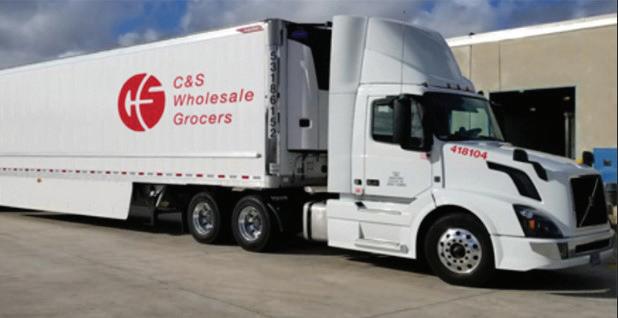
4 minute read
Keeping the Supply Chain Strong
BY ALEXIS CHAPMAN
By most estimates Hawaii imports over 90% of the food consumed in the state. With 1.4 million residents and about 200,000 tourists at any given time, getting enough food to these remote islands to keep the state fed is a challenge in the best of times. It takes a lot of planning and very coordinated hard work. HFIA’s supplier members are experts and have always made sure Hawaii has what we need, even during disasters of the past. However, the COVID-19 pandemic has created unprecedented obstacles. Beau Oshiro Vice President, Division Manager at C&S Wholesale Grocers explained, “When you have a hurricane or a flood it’s contained here. But this pandemic is affecting everyone and everywhere, which has also changed the landscape of how we do business.” The global markets that supply the world have changed quickly and dramatically in the past weeks our supplier members have adapted and continue to maintain a strong supply chain.
Advertisement
Keeping Shelves Stocked Different segments of the food industry have different supply chains. Restaurants, grocery stores, and institutional food buyers like schools and hospitals buy different types of products from different places. COVID-19 hit them all in different ways that continue to change as the pandemic progresses. One of first and most drastic impacts was panic buying of certain items in early and mid-March. A supply chain that relies on shipping most goods thousands of miles by boat is not easily adapted to sudden shelf stripping, but our suppliers managed to make changes that minimized empty shelves, and meant that Hawaii consumers faced fewer supply interruptions than in some markets on the mainland. Pasha Hawaii changed scheduled and had employees working around the clock to ensure that the supply chain to and from the islands was uninterrupted. C&S Wholesale Grocers works with multiple suppliers and manufacturers to bring goods to Hawaii. Making sure that goods are fairly distributed has been a top priority and C&S has worked with their partners at different ends of the supply chain to enact allotments so that everyone has a chance to get what they need. Empty Tables Prior the onset of the pandemic restaurants in Hawaii were reporting record sales and revenue, then overnight many were forced to close. Those that have been able to remain open, or to reopen, are only able to offer takeout and are missing vital tourist revenue. For suppliers this has meant that an important customer base virtually dried up, and it happened so fast that large amounts of food destined for restaurants was already en route when restaurants were ordered to close.
Suppliers had to adapt rapidly to survive. Y. Hata & Co., Limited created a strategy of COVID-19 Pivots, which included expanded social media presence and new initiatives. Unyong Nakata, Enterprise Director of
Marketing at Y. Hata explained some of what their COVID-19 Pivot entails, “We launched a drive-through model called ChefZone Curbside where people can drive up, order food bundles and other products, pay, and safely be on their way – all with limited or no contact. Another new program is called Superette to GO! where we deliver food bundles to neighborhoods or organizations through partnerships with Kamehameha Schools and the Hawaii Lodging and Tourism Association.” Y. Hata recently launched their online store at www. chefzone.com to further provide safe and convenient solutions for food purchase. Taking Care of Their Own Now that the initial spike in grocery buying has subsided, drastically reduced demand is setting in for all Hawaii businesses, this necessitates a reduced work force for many companies including suppliers. At C&S Wholesale Grocers Beau Oshiro worked to enact furloughs instead of layoffs so that as many people as possible could retain their health benefits.
At Hawaii Foodservice Alliance they realized that while their staff are still working hard many of their family members have lost jobs. Chad Buck, HFA President explained, “This typically means that there is one less paycheck to help pay the household and food bills. To help address this, we have set up weekly food giveaways for our team members. Each member can take home rice, eggs, milk, bread, elbow macaroni, and other staple

items. The goal here is to help equip each team member to provide for their family’s needs.”
Looking Ahead The COVID-19 pandemic has changed so much about how our state does business, including the business of getting food. While the crisis may seem interminable it will eventually end, and the state will have to find a way to move forward and decide what we learn for these challenges. The companies that keep our state supplied with food and other essential items have shown remarkable fortitude and adaptability in continuing to do their work throughPHOTO C&S WHOLESALE GROCERS out the pandemic. Our industry, our state, and our leaders will have the opportunity to carry the lessons from COVID-19 forward to continue to make our supply chain even stronger for whatever the future holds.










